A Guide to the Most Beautiful Zinnia Varieties to Grow in Your Garden
Published: October 25, 2025 at 11:43:17 PM UTC
Zinnias are the crown jewels of summer gardens, offering an explosion of vibrant colors that last from early summer until the first frost. These cheerful blooms are not only stunning but also incredibly easy to grow, making them perfect for both novice and experienced gardeners.
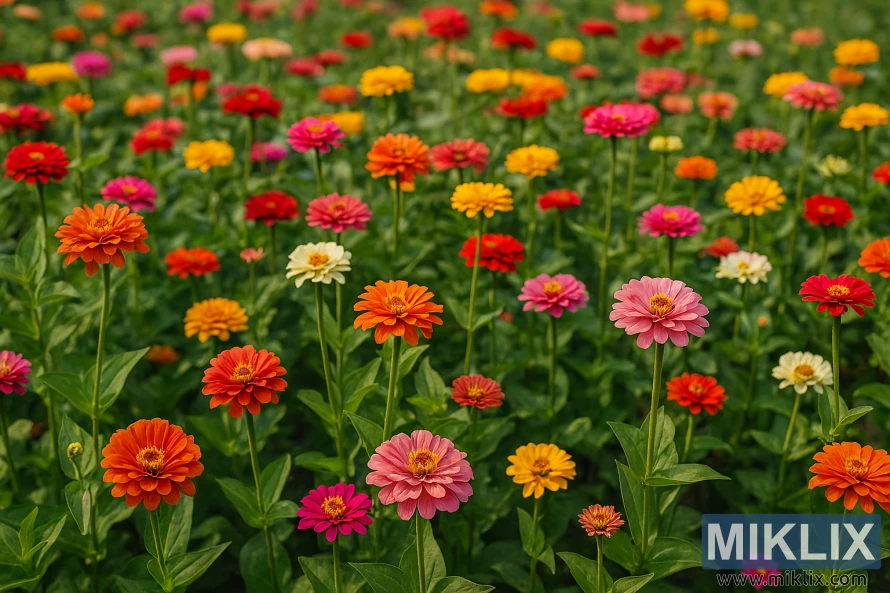
With dozens of varieties available, from towering giants to compact border plants, zinnias offer endless possibilities for adding brilliant color to your outdoor space. In this guide, we'll explore the most beautiful zinnia varieties that deserve a place in your garden this season.
Why Zinnias Deserve a Spot in Your Garden
Zinnias have earned their place as garden favorites for many good reasons. These annual flowers are incredibly prolific bloomers—the more you cut them, the more flowers they produce, giving you an endless supply of colorful blooms throughout the growing season. Their vibrant colors and varied forms make them perfect for both garden displays and cut flower arrangements.
Beyond their beauty, zinnias are butterfly magnets, attracting pollinators that bring your garden to life. They're also remarkably heat and drought tolerant once established, making them resilient choices for summer gardens in most climates. With minimal care requirements and maximum visual impact, zinnias offer one of the best returns on effort in the gardening world.
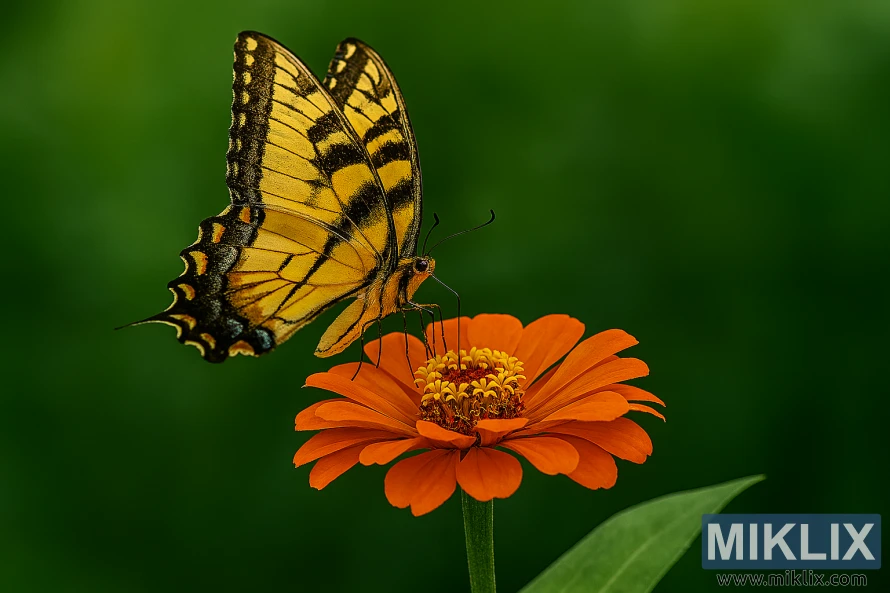
10 Most Beautiful Zinnia Varieties for Your Garden
1. Benary's Giant Series
Benary's Giants are the showstoppers of the zinnia world, producing massive blooms that can reach 4-5 inches across. These tall beauties grow 3-4 feet in height, making them perfect for the back of borders or as dramatic focal points. Their fully double flowers resemble dahlias with densely packed petals in vibrant, saturated colors.
Available in 13 stunning colors including lime, wine, coral, purple, and bright pink, Benary's Giants offer something for every color scheme. Their strong stems make them exceptional cut flowers that can last up to two weeks in arrangements. If you're looking to make a bold statement in your garden, these magnificent zinnias are an absolute must-grow.
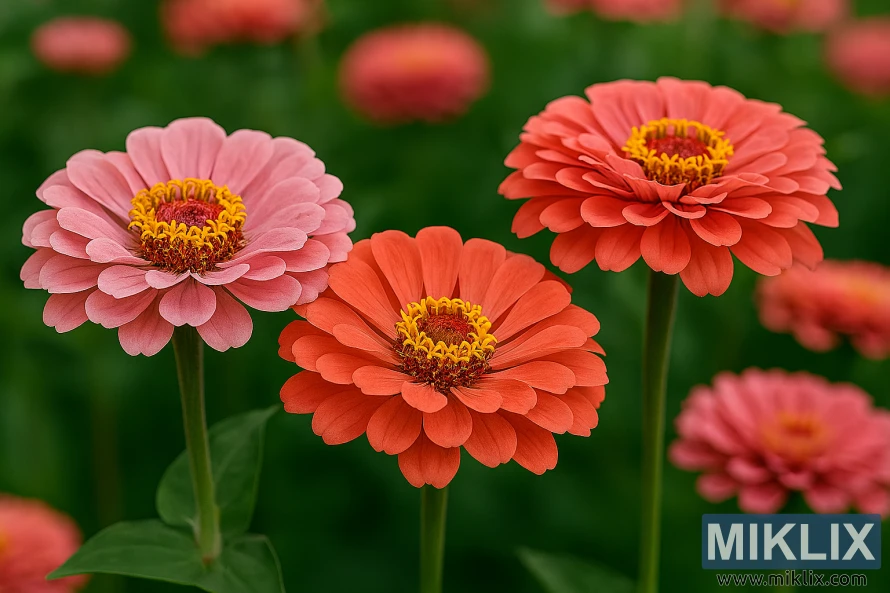
2. Queen Series Zinnias
The Queen series offers some of the most sophisticated and unusual colors in the zinnia world. Queen Red Lime, with its dusty rose petals and lime green centers, has become a favorite among flower farmers and home gardeners alike for its unique vintage appeal. Queen Lime Orange delivers a stunning blend of coral, peach, and apricot tones with pale green highlights.
Growing 2-3 feet tall, these elegant zinnias add a designer touch to any garden with their subtle, complex coloration. Their unique hues blend beautifully with other flowers in both the garden and vase arrangements. If you're looking for zinnias that offer something beyond the traditional bright colors, the Queen series delivers extraordinary beauty with a contemporary twist.
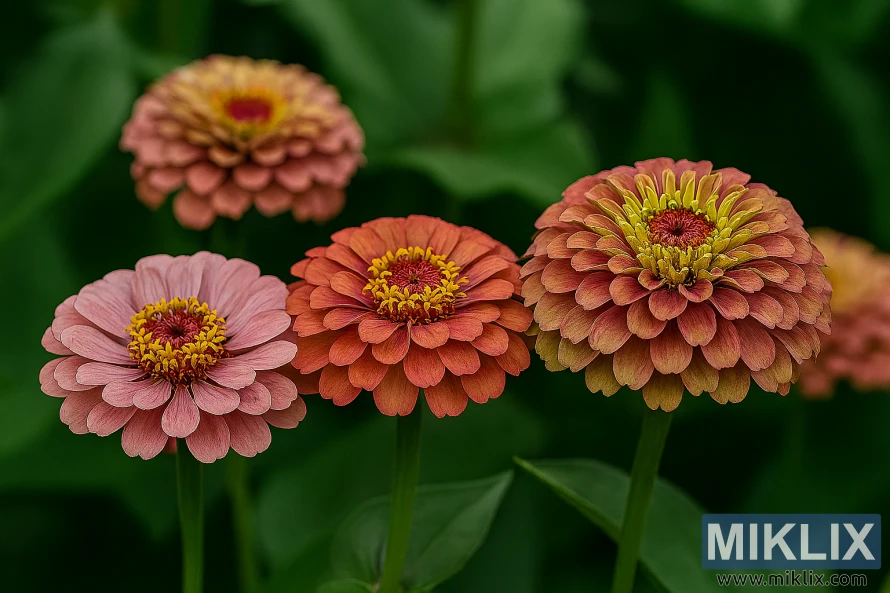
3. Oklahoma Series
Oklahoma zinnias feature smaller blooms (about 2 inches across) on plants that reach 2-3 feet tall. Don't let their more modest size fool you—these zinnias pack plenty of charm and have several advantages over larger varieties. Their smaller flowers are perfect for adding delicate texture to garden beds and bouquets.
Oklahoma zinnias come in beautiful shades of salmon, carmine, pink, and white. One of their greatest strengths is their superior resistance to powdery mildew, a common problem with zinnias in humid climates. This makes them an excellent choice for gardeners in regions with hot, humid summers. Their prolific blooming habit ensures you'll have an abundance of flowers from early summer until frost.
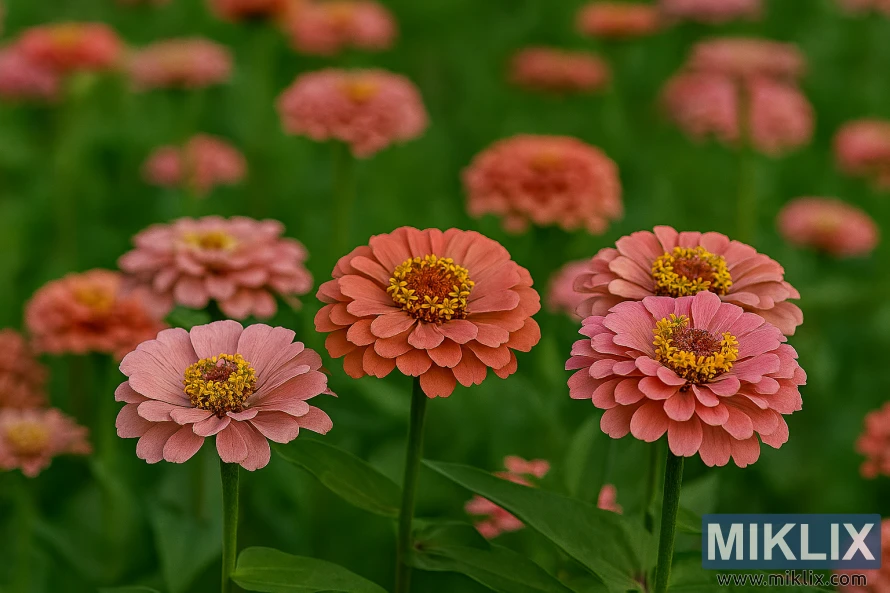
4. Zinderella Series
Zinderella zinnias offer a completely different look with their unique scabiosa-type blooms. Each flower features a dome of shorter, ruffled petals surrounded by a skirt of longer petals, creating a distinctive two-tiered effect. Growing to about 2.5 feet tall, these zinnias add wonderful textural interest to the garden.
Available in antique-looking shades of lilac, peach, pink, and purple, Zinderellas bring a vintage charm to flower beds and arrangements. While they may produce fewer double blooms in very hot climates, even their single blooms maintain a beautiful form. These unusual zinnias are perfect for gardeners looking to add something truly different to their flower collection.
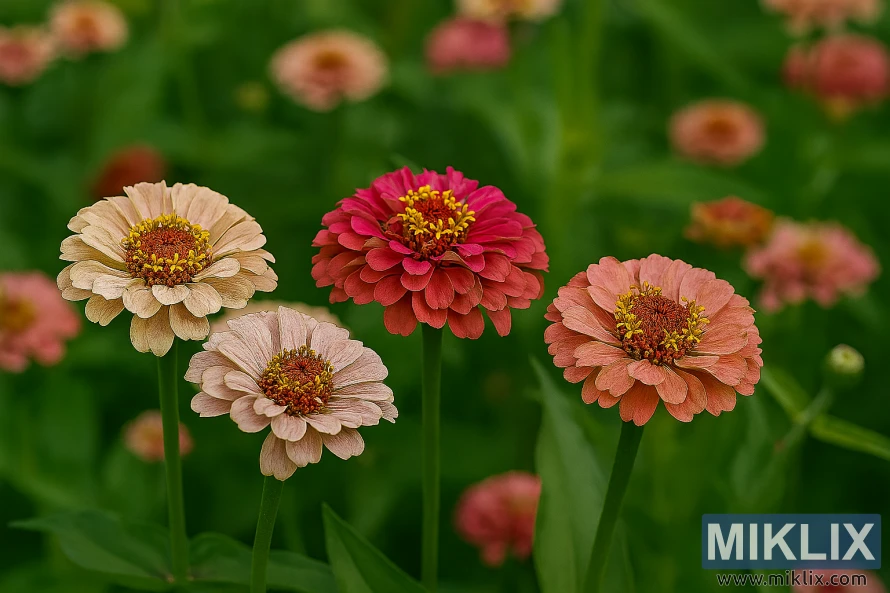
5. Cactus-Flowered Zinnias
For a dramatic, eye-catching display, cactus-flowered zinnias are unmatched. Their twisted, quill-shaped petals create flowers that look almost like sea creatures or fireworks frozen in time. Growing 2-3 feet tall with blooms that can reach 4-5 inches across, these statement flowers demand attention in any garden setting.
Available in bright colors including red, orange, pink, and yellow, cactus zinnias add incredible texture and movement to both gardens and bouquets. Their unusual form makes them conversation pieces and focal points. If you're looking to create a garden that stands out from the ordinary, these spectacular zinnias deserve a prime spot in your planting plans.
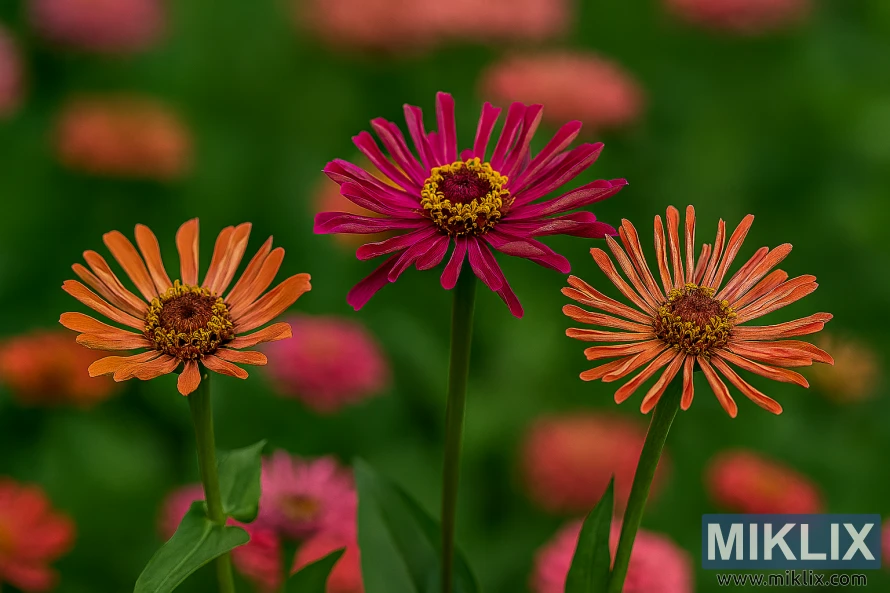
6. Peppermint Stick Zinnias
Peppermint Stick zinnias offer a delightful surprise with their unique speckled and striped petals. Each bloom is slightly different, with white or cream-colored petals decorated with red or pink speckles and stripes. Growing to about 2.5 feet tall, these charming zinnias add a playful element to the garden.
These vintage varieties have been garden favorites for generations, and it's easy to see why. Their whimsical appearance brings joy to flower beds and arrangements alike. Children especially love these "painted" flowers that look like they've been splashed with color. For a garden that brings smiles and creates conversation, Peppermint Stick zinnias are a wonderful choice.
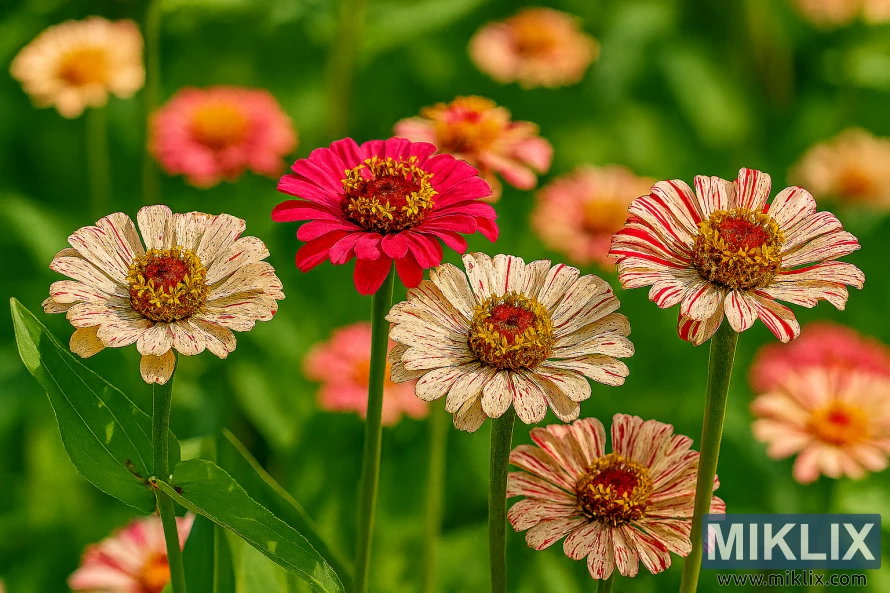
7. Zowie! Yellow Flame
Zowie! Yellow Flame is an award-winning zinnia that lives up to its exclamatory name. These show-stopping flowers feature magenta-red centers with yellow-tipped petals, creating a bicolor effect that resembles flames. Growing to about 3 feet tall with blooms up to 5 inches across, these zinnias make a bold statement in any garden.
As the flowers age, their colors evolve, creating an interesting mix of hues on each plant. Their strong stems make them excellent cut flowers, and their vibrant colors attract butterflies and other pollinators. If you're looking for a zinnia that delivers high drama and visual impact, Zowie! Yellow Flame is an outstanding choice that will become a garden centerpiece.
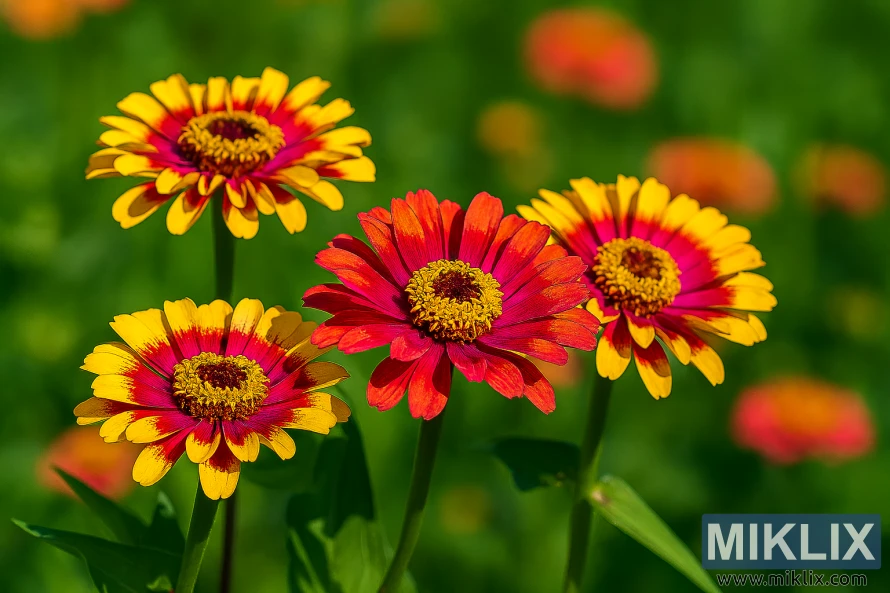
8. Jazzy Mix
Jazzy Mix zinnias offer a beautiful autumn palette of yellow, cream, orange, burgundy, and maroon that brings warmth to any garden. Growing to about 2 feet tall with petite 1-2 inch blooms, these compact zinnias are perfect for smaller spaces or the front of borders.
Despite their fall-like colors, these zinnias should be planted in spring or early summer for the best results. Their rich, earthy tones make them perfect companions for late-season perennials and grasses. If you're looking to extend your garden's color into autumn or create fall-themed bouquets, Jazzy Mix zinnias provide the perfect seasonal transition with their harvest-inspired hues.
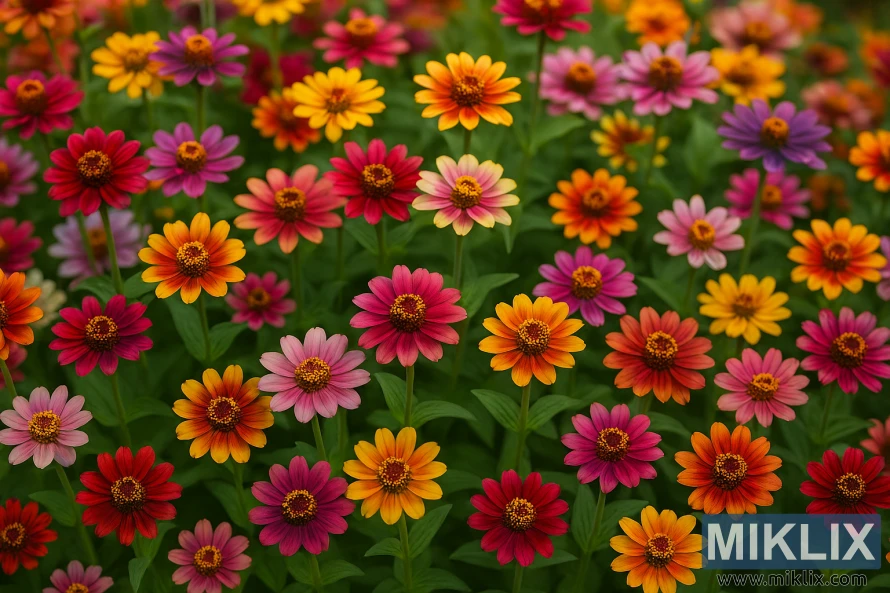
9. Thumbelina Dwarf Mix
Thumbelina zinnias are perfect for gardeners with limited space or those who want to add color to the front of borders. These compact plants begin blooming when just 3 inches tall and may eventually reach 6-8 inches in height. Their smaller stature doesn't mean smaller impact—these little beauties produce an abundance of colorful blooms.
Available in a rainbow of colors including pink, purple, orange, red, yellow, and lavender, Thumbelina zinnias create a cheerful carpet of color. They're ideal for container gardens, window boxes, or edging paths. Children especially love these kid-sized flowers that are perfect for small hands to pick and arrange. For maximum impact in minimal space, these diminutive zinnias deliver big results.
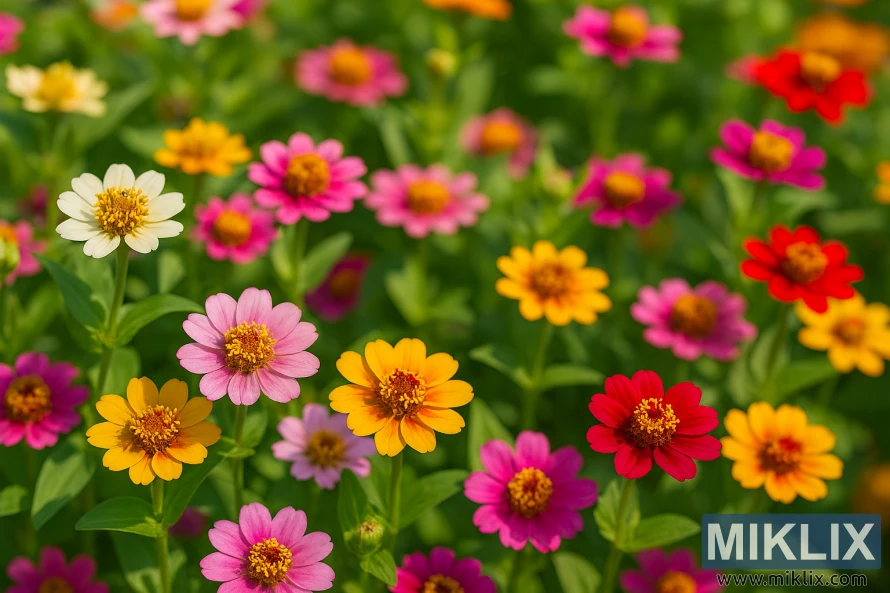
10. Profusion Series
Profusion zinnias have won multiple awards for their outstanding garden performance, especially in challenging conditions. These compact plants grow 12-18 inches tall and wide, creating mounds covered with 2-3 inch single flowers. Their exceptional disease resistance makes them ideal for humid regions where other zinnias might struggle.
Available in cherry, orange, white, yellow, and bicolor varieties, Profusion zinnias bloom continuously without deadheading. They're perfect for mass plantings, containers, or anywhere you need reliable, long-lasting color. For low-maintenance beauty that performs from spring until frost, even in the hottest summer conditions, Profusion zinnias are unbeatable garden workhorses.

Essential Growing Tips for Beautiful Zinnias
Soil and Sunlight
Zinnias thrive in full sun, needing at least 6-8 hours of direct sunlight daily. They prefer well-draining soil with moderate fertility. While they can tolerate poor soil, adding compost before planting will promote stronger growth and more abundant blooms. Avoid overly rich soil, which can produce lush foliage at the expense of flowers.
Planting & Spacing
Direct sow zinnia seeds after all danger of frost has passed and soil has warmed. Plant seeds ¼ inch deep and thin seedlings to proper spacing: 6-8 inches for smaller varieties and 12-18 inches for larger types. For earlier blooms, start seeds indoors 4-6 weeks before your last frost date. Succession planting every 2-3 weeks ensures continuous blooms.
Water & Fertilizer
Water zinnias at the base rather than overhead to prevent powdery mildew. Once established, zinnias are moderately drought-tolerant, but consistent moisture produces the best blooms. Apply a balanced fertilizer when plants are about 12 inches tall, but avoid excessive nitrogen, which promotes foliage over flowers. A light feeding every 4-6 weeks is sufficient.
Maintenance
Deadhead spent blooms regularly to encourage continuous flowering. For cut flowers, harvest in the morning when stems are fully hydrated. Cut stems when flowers are about 75% open for longest vase life. To prevent disease, maintain good air circulation by proper spacing and avoid wetting foliage when watering.
Pest and Disease Management
Zinnias can be susceptible to powdery mildew, especially in humid conditions. Plant disease-resistant varieties like the Oklahoma or Profusion series in problem areas. Japanese beetles may occasionally feed on zinnia flowers; handpick them in the morning when they're sluggish or use row covers during peak beetle season.
End of Season
At the end of the growing season, consider leaving some zinnia flowers to dry on the plants. The seeds will attract goldfinches and other birds to your garden. You can also collect seeds from open-pollinated varieties to plant next year, though colors may vary if different types were grown nearby.
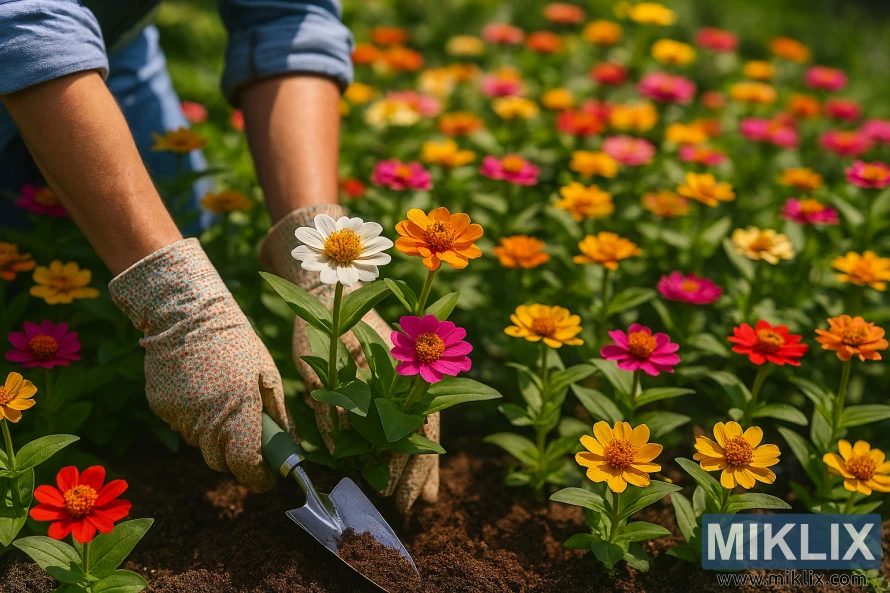
Design Ideas for Showcasing Beautiful Zinnia Varieties
Border Plantings
Create stunning garden borders by planting zinnias in graduated heights. Place tall varieties like Benary's Giants at the back, medium-height varieties like Queen series in the middle, and compact types like Profusion at the front. For a cohesive look, choose colors within the same family (all pastels or all bright tones), or create dramatic contrast with complementary colors like purple and yellow.
Container Gardens
Zinnias excel in containers, bringing vibrant color to patios and balconies. Choose compact varieties like Profusion or Thumbelina for smaller pots, or use larger containers for taller types. For a stunning display, combine zinnias with trailing plants like sweet potato vine or bacopa that spill over the edges. Single-variety containers create bold color blocks, while mixed plantings offer more variety.
Color Combinations
Create magical color schemes by thoughtfully combining zinnia varieties. For a calming garden, pair lavender and white zinnias with silver-leaved plants. For energetic displays, mix orange, yellow, and red varieties. The Queen series zinnias with their muted tones work beautifully with ornamental grasses and purple perennials for a sophisticated look.
Companion Planting
Zinnias pair wonderfully with many garden favorites. Plant them with cosmos, marigolds, and sunflowers for a cheerful cutting garden. Combine with salvias and lantanas to attract even more butterflies. For an edible landscape, intersperse zinnias among vegetables—they'll attract beneficial insects while adding beauty to your food garden.
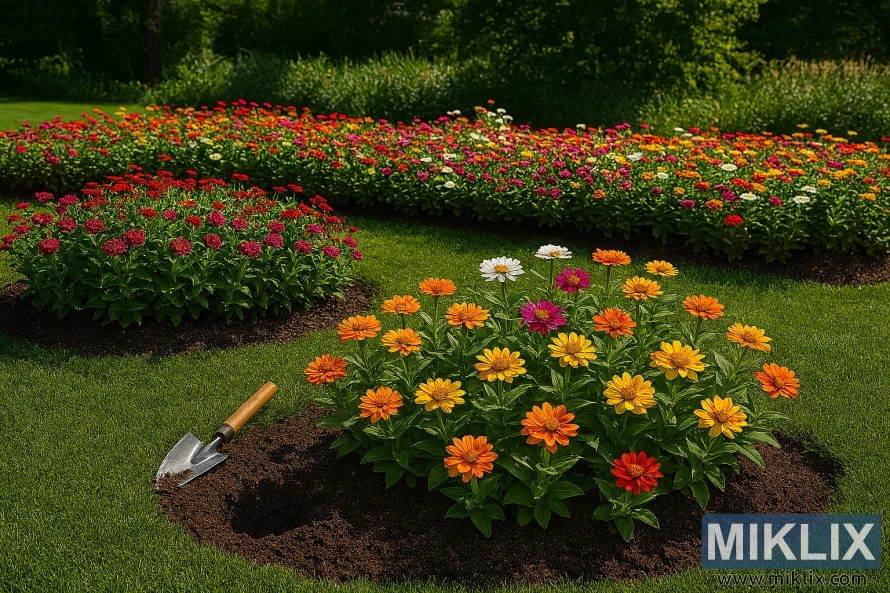
Start Growing These Beautiful Zinnia Varieties This Season
With their incredible diversity of colors, sizes, and forms, zinnias offer something for every garden and gardener. From the sophisticated hues of the Queen series to the bold drama of Benary's Giants, these easy-to-grow flowers reward minimal effort with maximum beauty. Whether you're creating a butterfly garden, planning a cutting garden for fresh bouquets, or simply want to add vibrant color to your landscape, zinnias are the perfect choice.
As you plan your garden this season, consider dedicating space to several of these beautiful zinnia varieties. Start with just a few packets of seeds, and you'll soon be rewarded with an abundance of stunning blooms that will brighten your garden and your home from summer until frost. The hardest part will be choosing which of these gorgeous varieties to grow!
Further Reading
If you enjoyed this post, you may also like these suggestions:
- Top 15 Most Beautiful Rhododendron Varieties to Transform Your Garden
- A Guide to the Most Beautiful Lavender Varieties to Grow in Your Garden
- A Guide to the Most Beautiful Tulip Varieties for Your Garden
